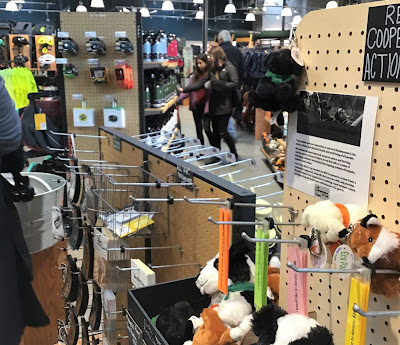 |
| Pre-Christmas gift-giving in late December 2022, busy shoppers |
While waiting in line and looking around the sections of the store for backpacking, biking, jogging, and so on, the myriad invisible threads connecting manufacturing source to retailer to end user suggested themselves to my mind's eye. Some goods have frequent turnover, no sooner put on display than they sell and end up in somebody's garage or stomach (edibles and impulse purchases exhibited near the checkout counter). Others are the reverse, sitting on the showroom floor for months or possibly years before the buyer lays claim to the thing. In-between the extremes of frequent turnover and seldom sold items, there are many articles that arrive, go on display, and a few weeks or months later are sold. Viewed in this telescoping (longitudinal) timescale, the retail shop can be understood as a kind of bus stop where traveling goods arrive and have a lay-over before their connecting travel takes them to the end user's location. There is a constant inventory flow into the store and then out again, sometimes being quickly restocked, but other times being displaced by a new model or different product altogether.
The complex choreography of this modern, Internet-connected, and corporate office-linked business operation is a marvel to behold. There are the multiple time scales for inventory washing in and washing out, like a tidal flow. But there is also a geographical dimension of complexity, since design to maker to wholesale hub to retail outlet comprises so many routes and the accompanying invoicing of money changing hands from one account to another. This photo in the foreground from the queue near the cashier counter shows the small, low-cost, and cute items meant to tickle one's emotional response and bypass the thinking mind to trigger an impulse purchase. In the distance there are a few shoppers handling things of interest, looking at cost, features, and construction quality. The photo serves as a prompt to think about the inventory dance with different items flowing in and out at different rhythms, and also geographically, to appreciate the wonderment of the many suppliers whose goods intersect within the walls of the retail establishment for a limited period of time before ending up in one household or another.